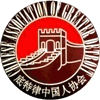
CCBA provides assistance to help new immigrants to become naturalized citizens and register as voters. In addition, CCBA organizes a number of cultural and civic activities such as lion dances, adult chorus groups, senior tai chi and language classes.
Huiguans are social welfare associations founded on principles of loyalty and fraternity. They provide orientation, bureaucratic and legal aid, translation services, temporary lodging, credit and mutual aid.
Origins
In the mid-1800s, many Chinese immigrants came to America with little or no resources. They formed family associations based on Chinese regional districts, dialect, or last names to support one another and share information and services.
These groups were also called tongs, and they were often fractious, even violent, with their leadership rotating among the different associations. This was an important part of the immigrant experience, and a way to preserve and maintain the cultural values they had brought with them.
By the early 1900s, some of these tongs started to merge and work together. They became the Chinese Consolidated Benevolent Association (CCBA). The CCBA was also an intermediary for its members with the government. It compiled and presented reports of commercial grievances to the Foreign Office on behalf of members. It also produced quarterly summaries of Chinese domestic and international affairs. It also translated the Chinese press and acted as a forum for Chinese political ideas.
Functions
A fundamental characteristic of traditional Chinese society is the inter-locking nature of state, gentry, and local social system. The state was primarily concerned with the exploitation and control of surplus wealth. It recruited from the gentry for its positions of power, and in turn the gentry reinforced their own patterns of authority and social relationship with state power roles.
Western observers in the nineteenth century often referred to this ruling status group as the “gentry” (jiang) but modern scholars have objected to this term on grounds of its false analogy with the English gentry. Instead, they have tended to refer to the class of men of modest means who controlled local land and exercised some form of government function.
With the exception of a few small kinship associations, China Association was essentially a mercantile organization. It served to collect and present grievances from British traders in China, and acted as the liaison with the government and the Chinese authorities.
Membership
Membership is open to individuals or organizations whose activities promote and support the purposes of the Society. Members must uphold the bylaws of the Society, believe in and promote its values, and pay annual dues as established by the Board of Directors.
CCBA’s work included notifying the government of the dangers facing Chinese residents in Canada’s Chinatown and advocating on their behalf. It published quarterly summaries of domestic and international events in China, translations of the Chinese press, and acted as intermediary between local community associations and the British Embassy in Beijing.
CCBA’s archives are held at the University of Victoria. This portal makes them available for public use. CCBA was one of many benevolent associations established by overseas Chinese communities. Other examples include the Chinese Six Companies in San Francisco, Zhong Hua
Activities
The association focuses on the unity of Chinese and local students and scholars. Through the organization of social and cultural events, members are able to network with people of different nationalities and backgrounds. In addition, they can enhance their skills such as teamwork and management. This can be a good asset for future careers in business development and social service.
In the past, CCBA helped victims of anti-Chinese racial violence, lobbied for unemployment forms and office support in Chinese, encouraged Chinese-American involvement in electoral politics, and played an advocacy role on legislation concerning Chinese Americans. Moreover, CCBA also cooperated with mainstream organizations to provide services to Chinese Americans.
Currently, the society organizes various activities such as the Week of Chinese Culture, One Week CP, Badminton Contest, Lectures on Job Hunting, etc. These activities not only enrich the society’s cultural life, but they are also very popular among students. For example, the yearly Chinese and Japanese Culture Day is an event that brings together classes of both languages for an interactive celebration of both cultures.
